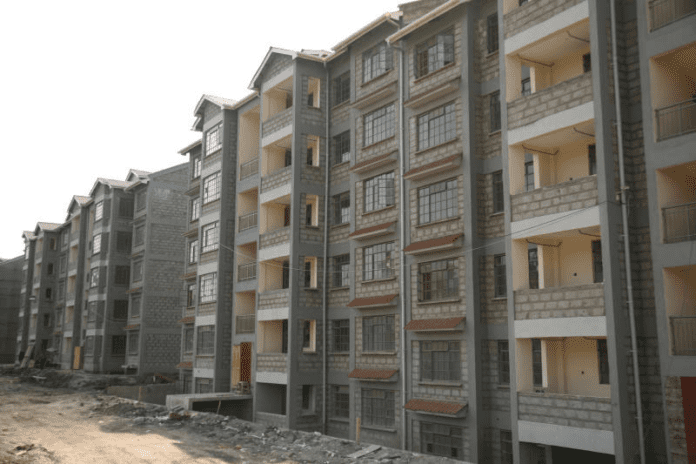Flats and apartments have taken over Kenya’s real estate market, with leasing activities outpacing rentals, according to the 2023-2024 Kenya Housing Survey by the Kenya National Bureau of Statistics (KNBS).
The report highlights a notable dominance of flats and apartments in residential rentals, comprising 77.1% of the market.
The survey revealed that three-bedroom flats or apartments accounted for 23.3% of rental properties, followed by two-bedroom units at 18.1%. Maisonettes with four or more bedrooms constituted 12.2%.
Nairobi, Kiambu, and Kajiado counties hosted the largest share of rental properties, with the Nairobi middle region leading at 19.6%, followed by Nairobi’s upper middle (17.9%), lower (14.7%), and upper regions (14.6%). Coastal counties such as Kwale, Lamu, and Taita Taveta had the least rental properties, with shares of 0.2%, 1.3%, and 2.2%, respectively.
Rental occupancy rates remained high, with 88.8% of available properties leased out in 2023. Rental prices varied significantly, with one-bedroom bungalows going for a median rent of KSh 15,000, while four-bedroom bungalows commanded up to KSh 170,000.
Townhouses attracted the highest rental rates, with two-bedroom units leasing for KSh 120,000 monthly. Rental yields also differed by property type, with studio apartments and bedsitters offering the lowest returns at 2.2%, compared to two-bedroom townhouses, which yielded 8.3%.
Commercial Property Overview
The commercial real estate market was dominated by office buildings, which accounted for over 50% of the sector. Nairobi, Kiambu, Mombasa, and Machakos counties were key hubs for commercial properties, with office spaces commanding the highest rates at KSh 11,000 per square foot.
Special-purpose properties and condominiums also attracted premium rents at KSh 150 and KSh 140 per square foot, respectively, while industrial properties had the lowest rental rates at KSh 40 per square foot.
Key Amenities and Housing Trends
The survey found that 73.9% of residential properties had parking lots, while 22.7% included domestic servant quarters (DSQs). CCTV cameras were the most common amenity, present in 59.8% of properties, followed by garden play areas (59.1%) and backup generators (55%).
Interestingly, 638,761 households across Kenya were found to live rent-free without the landlord’s consent. Lamu County led with 19%, followed by Mandera (18.9%) and Nyandarua (12%). Additionally, 111,089 tenants were reported to have defaulted on rent payments, with Mandera leading at 14%.
Homeownership and Financing
The survey highlighted that 52.8% of homeowners built their houses through one-off construction, while 27% opted for incremental construction. Only 2.5% of homes were purchased.
Cash savings funded 91.4% of construction projects, while loans financed 5.5%. Mortgage uptake remained minimal, with less than 1% of homeowners acquiring properties through mortgages.
Legal Agreements and Policy Insights
The report indicated that 71.8% of tenants lacked written lease agreements, potentially exposing them to legal risks. Nairobi (40.5%), Kajiado (69.4%), and Taita Taveta (50.2%) counties recorded the highest proportions of tenants with formal lease agreements.
Despite the sector’s vibrancy, a lack of reliable housing supply data persists, limiting effective policy formulation. This is concerning, given that Kenya faces an annual housing deficit of 200,000 units, against a construction rate of only 50,000 units.
Sector Growth and Contributions
Real estate remains a critical component of Kenya’s economy, contributing an average of 8.9% to the GDP. The sector’s output grew by 33.7%, from KSh 946.7 million in 2019 to KSh 1.27 billion in 2023, driven by infrastructure development, urbanisation, and government affordable housing initiatives.
The report underscores the need for enhanced data collection, policy reforms, and investment to address challenges and sustain growth in Kenya’s dynamic real estate market.







